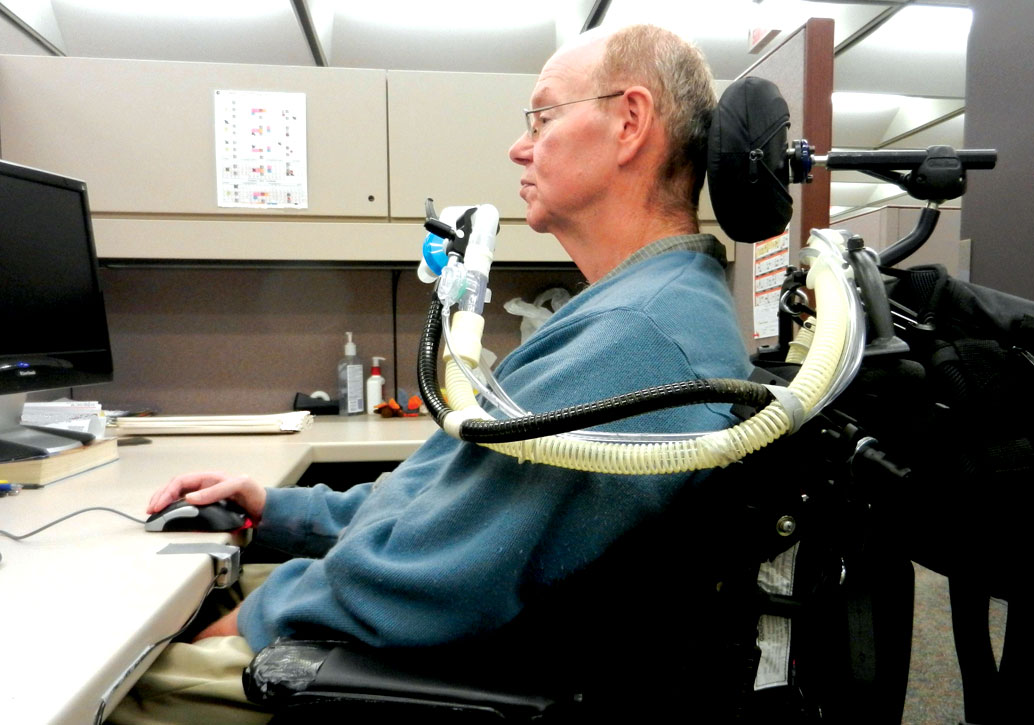How to mount a ventilator on a mobility device.
By Kari Beggs, OT Reg (Ont); Jackie Barwin, OT Reg (Ont);
and Nives McDonald, OT Reg (Ont)
Occupational therapists are often involved in the mounting of ventilators to both power and manual wheelchairs. However, there are few guidelines and limited literature available to assist therapists with this process. Over the years at The Ottawa Hospital Rehabilitation Centre, we have handled each referral on a case-by-case basis, and have worked in consultation with the respiratory therapist, vendor, service technician and sometimes with the rehabilitation engineer. This past year was unusual in that our department received approximately 15 referrals to mount the Trilogy 200 ventilator. Ontario’s Ventilator Equipment Pool was transitioning from older-style ventilator units to newer technology, and thus both previous and new clients needed to be seen. Here’s how we did it:
Teamwork and problem solving
Our occupational therapists met with the respiratory therapists to learn more about the Trilogy ventilator, and to problem solve the task of mounting it to a mobility device. The goal was to find a solution that was safe and efficient and that would reduce the need for custom parts.
Three tasks to consider
When mounting a ventilator to a wheelchair, the three issues are securing the ventilator, determining the battery supply and finding a suitable method to support the mouthpiece.
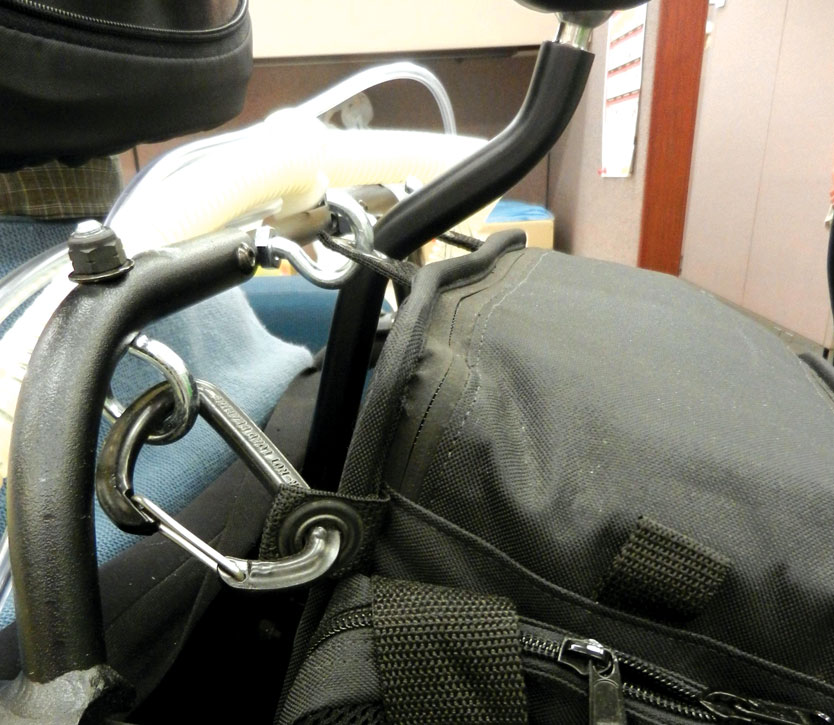 1) Mounting the ventilator
1) Mounting the ventilator
After exploring several options for securing the ventilator to the wheelchair, the decision to use the manufacturer’s bag was chosen (See photo).
• For the Trilogy ventilator, we used the following parts for mounting it to a power chair:
• A second stabilizer bar, ordered from the wheelchair manufacturer. This providesadditional attachment pointsfor the Trilogy bag, to prevent movement and keep the bag close to the chair.
• Six metal fasteners to attach to the stabilizer bars. Two were bolted to the top bar and two to the bottom bar. The service technician cut a notch in the other two fasteners and added them to the top bar to be used as hooks. Six points of attachment help to evenly distribute the weight of the ventilator.
• Four carabiners, used to link the bag to the fasteners (see photo).
2) Batteries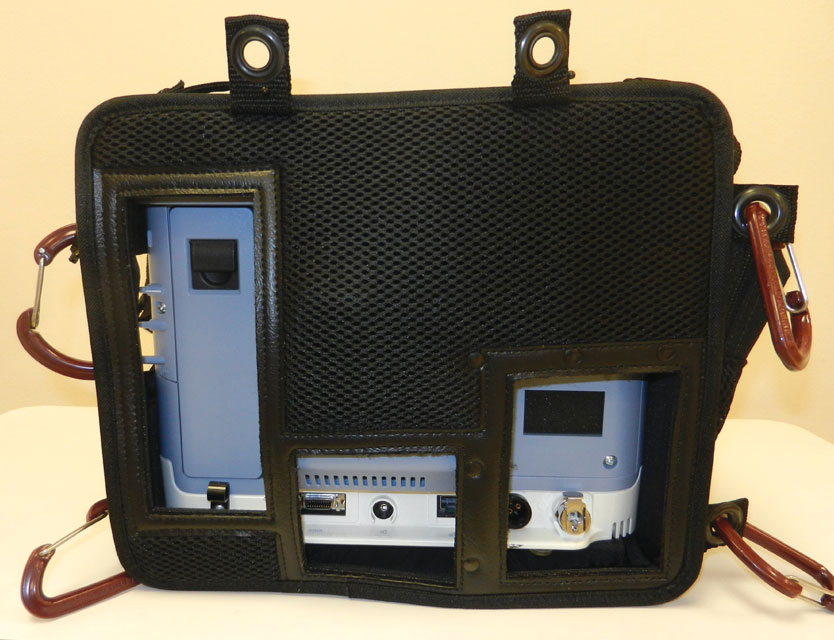
Many clients require more battery supply than is provided with the ventilator. The Trilogy has a three-hour internal battery, and an additional three-hour battery can be added. However, the time needed to attend appointments, go out to social events or spend the day at the office can easily exceed six hours.
Option 1: Use a separate U1 battery. Finding a location for this can be difficult. For stability, the ideal place is often at the front of the chair under the seat, and some wheelchair manufacturers have a bracket for this purpose. However, certain chair configurations do not allow for this, and sometimes the casters or client’s feet (especially if knee contractures are present) interfere with this location. In these cases, Option 2 may be necessary.
Option 2: The ventilator is hooked up to the power chair’s batteries using a voltage converter, which will supply the ventilator with the appropriate voltage as compared to the batteries that power the chair. This requires a skilled service technician and can take several hours to set up. Clients need to be involved in this decision, and should be informed of the risks and benefits of this option. Clients need to understand the effect this will have on overall battery supply and thus will have to monitor and adjust their activity level accordingly. Please note that this is not an option that is recommended by the manufacturer.
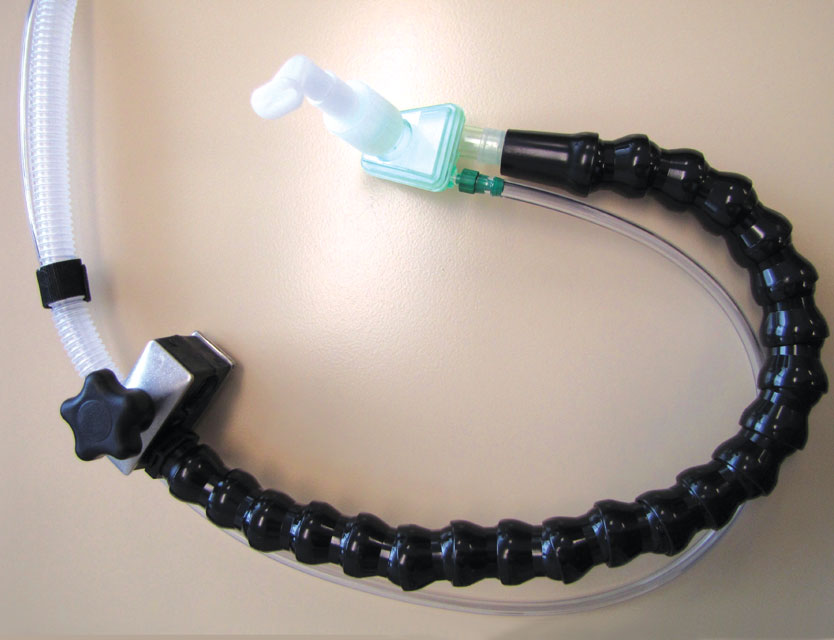 3) Mouthpiece attachment
3) Mouthpiece attachment
Many clients who are referred to us use non-invasive mouthpiece ventilation. In many cases, clients have decreased neck and trunk mobility. Therefore, the mouthpiece has to be secured in a very specific location within their limited reach. The circuit needs to be firmly attached to the chair but must also be movable for transfers and self-care.
Over the years we have used a variety of clamps and extensions to hold the circuit, but none have been ideal. To secure the circuit to the chair, we have used a clamp that is available through TASH and Manfrotto. The advantage of this clamp is that it is adjustable for various sizes of tubing; however, it can be bulky. As well, we have used the traditional gooseneck-style arms and other more rigid designs for supporting the circuit. We have also used the Nano clamp from Manfrotto to hold the mouthpiece in place. More recently, the CANVent arm has been developed using Loc-Line (see inset), and Philips Respironics has released a circuit support system. We are looking forward to trying these new products.
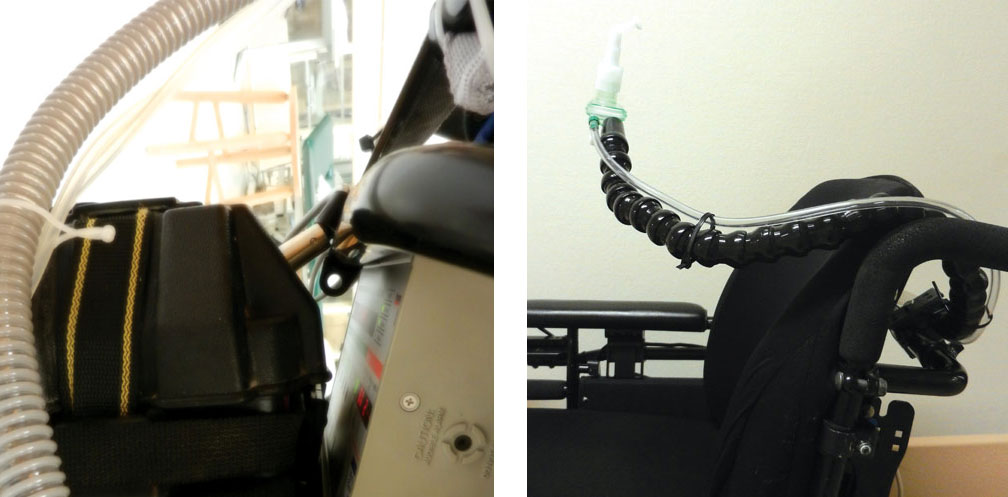 Conclusion
Conclusion
Our experiences in mounting ventilators to various wheelchairs have led us to develop a framework and practice guidelines that may improve safety and functional outcomes for our clients. We will continue to monitor and adjust our approach as necessary.
Acknowledgements:
The authors acknowledge the collaboration and technical expertise of Shopper’s Home HealthCare Ottawa (Rehab Location).
Kari Beggs, OT Reg (Ont), Jackie Barwin, OT Reg (Ont), and Nives McDonald, OT Reg (Ont) are occupational therapists working at the Ottawa Hospital Rehabilitation Centre.

